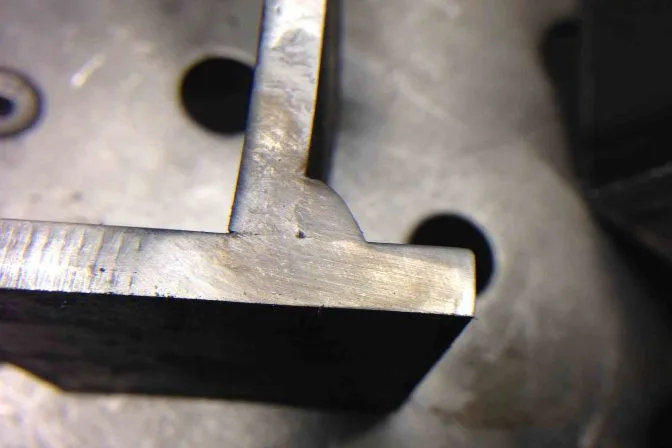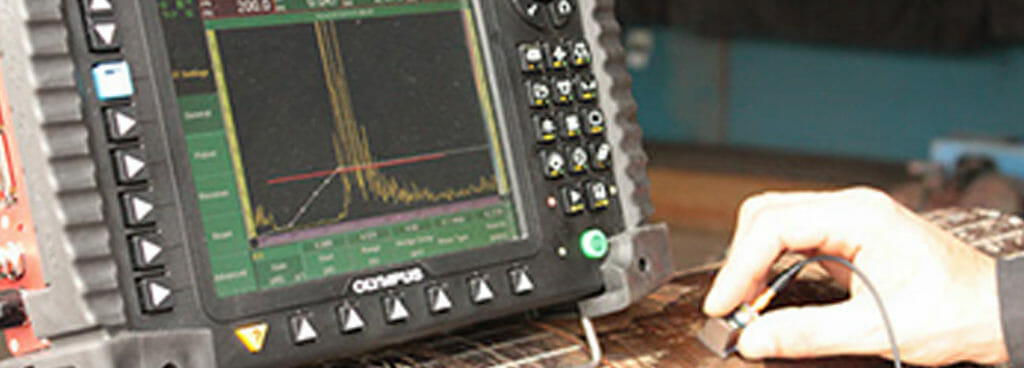Cutting-edge Strategies to Fillet Weld Examination and Testing: Enhancing Weld Quality and Conformity Criteria
In the realm of welding, the quality and stability of fillet welds play an important role in guaranteeing the architectural strength and integrity of various industrial elements. With the constant drive for boosted performance and compliance with rigid requirements, the expedition of innovative approaches to fillet weld evaluation and testing has ended up being important.
Advanced Non-Destructive Screening Methods
Utilizing state-of-the-art innovations, advanced non-destructive testing methods play a crucial duty in making certain the stability and top quality of fillet welds. These methods, such as phased selection ultrasonic testing (PAUT) and magnetic particle testing (MPT), deal detailed understandings right into the weld's internal structure without triggering any type of damages to the material. PAUT, for instance, utilizes multiple ultrasonic elements to evaluate the weld from different angles, supplying a detailed visualization of possible flaws like absence of fusion or fractures.
Likewise, MPT works in finding surface-breaking flaws by using a magnetic area and iron fragments to the weld area. This approach is particularly valuable for determining discontinuities that might compromise the weld's strength. By employing these innovative non-destructive testing methods, weld assessors can accurately evaluate the high quality of fillet welds, making certain compliance with industry criteria and laws. The ability to find defects early on not only boosts weld high quality but also protects against expensive rework or failings in structural integrity, underlining the value of these cutting-edge screening approaches in welding assessments.
Robotics and Automation in Inspection
The integration of robotics and automation has revolutionized the evaluation process for fillet welds, enhancing effectiveness and accuracy in quality assessment. Robotics offer exact control and repeatability in examining welds, guaranteeing dependable and regular results. Automated systems can be programmed to follow specific assessment courses, making certain complete coverage of welds and lowering the threat of human mistake.
Robot inspection systems geared up with sophisticated sensing units can discover and measure weld attributes with high accuracy, giving thorough data for analysis. These systems can recognize flaws such as fractures, lack of combination, and porosity, making it possible for prompt corrective actions to be taken. Furthermore, robotics and automation enable real-time information collection and analysis, providing prompt comments to drivers and assisting in quick decision-making procedures.
Additionally, making use of robotics and automation in fillet weld inspection enhances total productivity by decreasing assessment times and enhancing inspection throughput. By improving the examination procedure, suppliers can make sure weld high quality and compliance standards are met effectively, eventually bring about cost financial savings and enhanced product quality.
Using Expert System for Analysis
Expert system plays a crucial role in improving the effectiveness and precision of evaluation in fillet weld inspection procedures. By harnessing the power of AI, assessors can improve the evaluation of weld quality and conformity standards, causing extra reputable and precise outcomes. AI formulas can swiftly refine substantial quantities of data from weld evaluations, identifying defects or disparities that may be challenging to relate to the nude eye. This innovative technology makes it possible for real-time surveillance of weld high quality, enabling instant corrective activities to be taken if any kind of issues are identified.
Moreover, AI systems can gain from previous evaluation information, constantly improving their capability to determine possible issues and deviations in fillet welds. This adaptive learning capability boosts the additional reading overall quality control procedure, minimizing the possibility of human mistake and guaranteeing that welds meet the needed requirements. By integrating expert system into fillet weld analysis, markets can attain higher levels of performance, uniformity, and compliance in their assessment methods.
Portable Devices for On-Site Evaluation
 Enhancing field examination performance, the adoption of portable tools revolutionizes on-site analysis procedures for fillet welds. These tools provide adaptability and read this post here ease, permitting examiners to conduct detailed examinations in numerous locations, consisting of remote or tough environments. Mobile tools such as ultrasonic screening tools, magnetic bit evaluation tools, and digital radiography systems offer real-time data and high-resolution imaging abilities, enabling quick decision-making and immediate responses on weld top quality.
Enhancing field examination performance, the adoption of portable tools revolutionizes on-site analysis procedures for fillet welds. These tools provide adaptability and read this post here ease, permitting examiners to conduct detailed examinations in numerous locations, consisting of remote or tough environments. Mobile tools such as ultrasonic screening tools, magnetic bit evaluation tools, and digital radiography systems offer real-time data and high-resolution imaging abilities, enabling quick decision-making and immediate responses on weld top quality.One considerable benefit of portable tools is their ability to streamline inspection treatments, minimizing downtime and improving overall productivity. Inspectors can conveniently deliver these devices to different job websites, getting rid of the requirement for transferring heavy machinery or elements to off-site centers. In addition, the transportability of these tools promotes cost-effectiveness by decreasing transport costs and accelerating examination timelines.
Additionally, making use of portable devices for on-site examination advertises positive top quality control measures, as examiners can immediately recognize and deal with any possible welding problems or discrepancies. By integrating these innovative modern technologies into on-site examination methods, welding specialists can guarantee conformity with market requirements and boost weld high quality, inevitably resulting in boosted structural stability and safety and security in different welding applications.
Assimilation of Data Administration Solution
Having enhanced on-site evaluation procedures via the utilization of portable devices, the following phase includes the smooth assimilation browse around this site of data administration systems to better enhance effectiveness and information analysis capabilities in fillet weld inspection and screening. Welding Inspection Racine. By integrating information management systems into the assessment procedure, companies can streamline data collection, storage space, and evaluation. This integration permits real-time surveillance of weld high quality, prompt recognition of defects, and prompt decision-making to correct any type of problems that may emerge during the evaluation process
The integration of data monitoring systems allows smooth communication in between various stakeholders included in the assessment process, fostering collaboration and boosting total quality control procedures. Ultimately, the combination of information management systems offers to boost the requirements of fillet weld evaluation and screening, guaranteeing conformity with market laws and boosting weld high quality.
Verdict
In verdict, innovative techniques to fillet weld assessment and screening have dramatically boosted weld top quality and conformity standards. Advanced non-destructive screening techniques, robotics, automation, fabricated knowledge, portable tools, and information management systems have actually reinvented the method weld examinations are conducted. By making use of these innovations, sectors can ensure that welds satisfy the needed high quality criteria and guidelines, inevitably boosting total efficiency and security in welding processes.

By employing these sophisticated non-destructive screening strategies, weld inspectors can precisely assess the high quality of fillet welds, making certain compliance with industry requirements and guidelines. Portable devices such as ultrasonic testing tools, magnetic bit assessment devices, and electronic radiography systems give real-time information and high-resolution imaging capabilities, making it possible for quick decision-making and instant feedback on weld quality.
Having maximized on-site inspection procedures via the use of portable tools, the following phase entails the seamless combination of data monitoring systems to further enhance performance and information evaluation capacities in fillet weld examination and screening (Welding Inspection Racine). Ultimately, the assimilation of information management systems serves to raise the requirements of fillet weld assessment and screening, guaranteeing compliance with industry policies and enhancing weld quality
 In conclusion, cutting-edge techniques to fillet weld assessment and screening have considerably boosted weld high quality and compliance requirements.
In conclusion, cutting-edge techniques to fillet weld assessment and screening have considerably boosted weld high quality and compliance requirements.